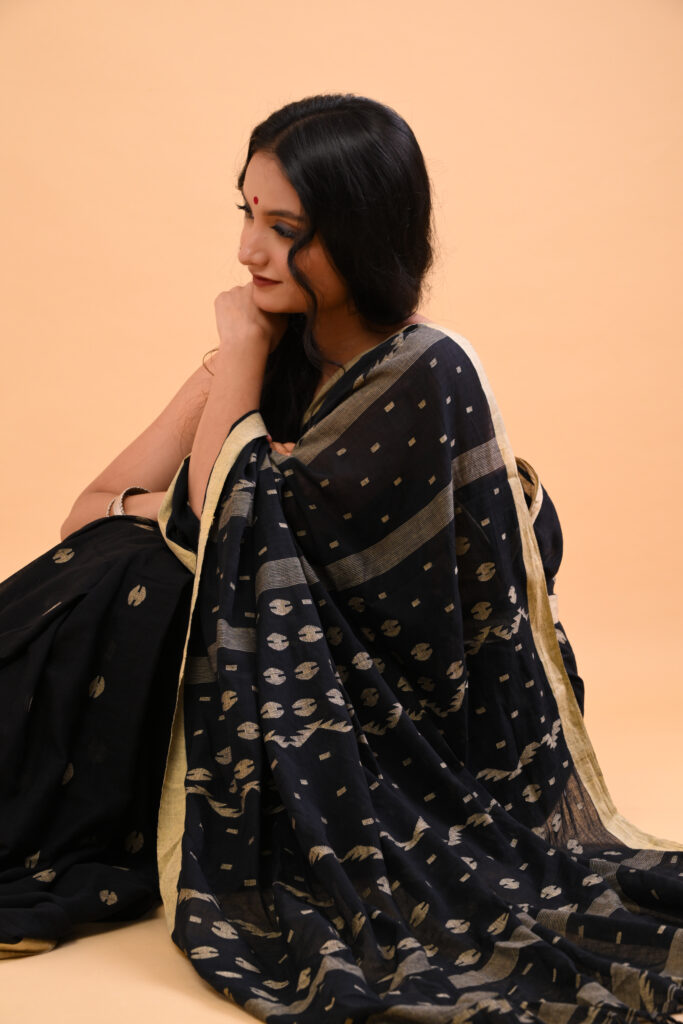The Jamdani weave is one of the most intricate and labor-intensive handloom techniques in India. Originating in Bengal, Jamdani sarees are known for their exquisite patterns that seem to float on the fabric like fine embroidery. Traditionally, these sarees were worn by royalty, with their delicate designs symbolizing wealth and refinement. Even today, the Jamdani weave continues to be celebrated for its craftsmanship and elegance, making it a popular choice for both everyday wear and special occasions.
Weaving a Jamdani saree requires immense patience and skill. The artisans weave each pattern by hand on a loom, with the motifs woven directly into the fabric instead of being embroidered. This results in a lightweight, almost translucent saree, with patterns that appear as though they are floating. Common motifs include flowers, vines, and geometric shapes, each representing different aspects of Bengali culture. The beauty of a Jamdani saree lies in its simplicity and the craftsmanship required to create such delicate patterns.
In recent years, there has been a resurgence in the popularity of Jamdani sarees, as more people recognize the value of handwoven textiles and the sustainability of traditional weaving practices. Modern designers are incorporating contemporary motifs into Jamdani sarees, ensuring that this ancient art form remains relevant in today’s fashion landscape. Whether worn for a casual day out or a formal event, the Jamdani saree continues to be a symbol of elegance, tradition, and artisanal excellence.

Explore the collection of
